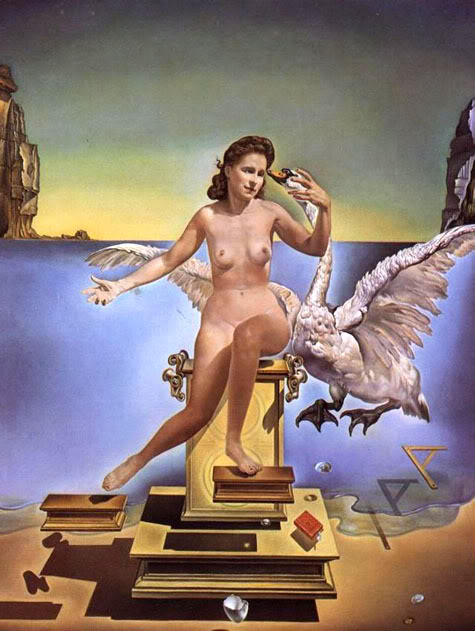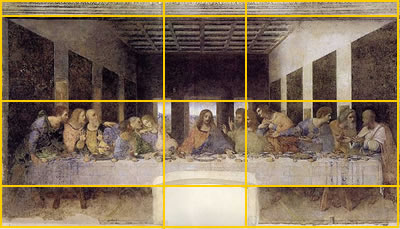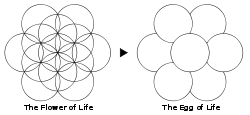Guest blog from Tai Carmen at Parallax.Parallax: exploring the architecture of human perception
Tai Carmen:
“There is a special ratio that can be used to describe the proportions of everything from nature’s smallest building blocks, such as atoms, to the most advanced patterns in the universe, such as unimaginably large celestial bodies.” Justin Kuepper
“The man who speaks with primordial images speaks with a thousand tongues.” Carl Jung
The Golden Ratio — also known as the Golden Mean, Phi, or the Divine Proportion — has inspired the imagination of artists, mystics, and mathematicians for centuries.
The proportion is derived from something known as the Fibonacci sequence – an arrangement of numbers wherein each succeeding term is simply the sum of the two preceding terms (1, 1, 2, 3, 5, 8, 13, etc.) The Fibonacci Sequence forms the basis for our Golden Ratio — 1.618 — a proportion which recurs with amazing consistency throughout the natural world.
For instance, sunflowers, which have opposing spirals of seeds, utilize the Fibonacci sequence to most efficiently distribute their seeds in the most compact space.
Ancient Greek philosopher and geometer Pythagoras is thought to be the first to have determined that human proportions themselves corresponded with the Golden Mean — later revisited by Leonardo da Vinci, most famously explored in The Vitruvian Man sketch.
The Golden Mean is unique in that the ratio of the whole to the larger
tion is the same as the ratio of the larger portion to the smaller portion of the whole.For instance, the length of any given person’s shoulder to their fingertips (the whole), divided by the length from their elbow to their fingertips (the larger portion), results in the 1.618 Golden Ratio. Then also the length from their elbow to their fingertips (the larger portion) divided by the length from their should to their elbow (the smaller portion) will yield the same result. The Golden Ratio. Completely consistent and the same in every human being.
Another example: if you divide the number of female honey bees by the number of male honey bees in any given hive, you will get — that’s right — 1.618. The Golden Ratio.
“The Fibonacci numbers are Nature’s numbering system. They appear everywhere in Nature, from the leaf arrangement in plants, to the pattern of the florets of a flower, the bracts of a pinecone, or the scales of a pineapple. The Fibonacci numbers are therefore applicable to the growth of every living thing, including a single cell, a grain of wheat, a hive of bees, and even all of mankind.” ~ Stan Gris
We see the Fibonacci spiral in everything from DNA ….
…. to the spiral of our solar system ….
…to the inside of the human ear …
…to the “Logarithmic Spiral” of a common shell.
Not surprisingly, the proportions within the Golden Ratio are commonly utilized in art and architecture to obtain maximum aesthetic harmony.
These patterns are backed mathematically with astounding consistency, suggestive of order within the seeming chaos of our world. For some, the existence of the Golden Ratio is proof even of God. At the very least, it shows an architectural harmony to the building blocks of life.
The belief that God created the universe according to a geometric plan has ancient origins. Plutarch attributed the belief to Plato, writing “Plato said God geometrizes continually.” In modern times the mathematician Carl Friedrich Gauss adapted this quote, saying “God arithmetizes.”
These naturally recurring patterns have a close relationship with Sacred Geometry, the use of geometric form as cosmic language, most famously represented by the mandala. Classically used in Eastern religions to help aid meditation, the mandala can be found in diverse cultures throughout the world, often representing the connectivity and continuity of life.
On his Sacred Geometry website, Bruce Rawles muses:
The fact that the root [of the Golden Ratio] is [mathematically] irrational expresses the concept that our higher dimensional faculties can’t always necessarily be expressed in lower order dimensional terms – e.g. “And the light shineth in darkness; and the darkness comprehended it not.” (from the Gospel of St. John, Chapter 1, verse 5).
In The Flower of Life, is the modern name given to the ancient geometrical figure composed of multiple evenly-spaced, overlapping circles. It is considered by many to contain ancient, religious value depicting the fundamental forms of space and time. Found in the palace of an Assyrian King, the oldest Flower of Life design dates back to 645 BC.
From the Flower of Life, the egg of life is born. The distances between the spheres of the Egg of Life are identical to the distances between the tones and half tones in music. Also, they are identical to the cellular structure of the third embryonic division.
A shape also echoed by atoms.
When viewed together, this seemingly disparate array of forms become a fascinating interplay of universal symbols, suggesting order and connectivity, from plant, to animal, to man; from the tiniest atom cluster to the largest intersteller swirl.
And it all starts with a simple mathematic sequence.
————————————————————————————
ADDENDUM:
…the golden section or divine proportion (or gate of harmony) is the ideal relation between two magnitudes, expressed numerically as and demonstrated in many masterpieces of different arts, applied consciously or, more often, by instinct. ‘There is,’ Voltaire said, ‘a hidden geometry in all the arts that the hand produces.’ Although the golden section was not the only constant to which the Cubists referred for the mathematical organization of their canvas, it reflected the profound need for order and measure that they felt more through sensibility and reason than as a result of calculation. Distorted by the incomprehension or bad faith of critics, the ‘Section d’Or’ exhibition met with immense avant-garde success in France and abroad, and constituted a general rally under the sign of Cézannian architecture and geometrical discipline. Read More:http://taicarmen.wordpress.com/2011/03/
For example, when Vermeer created “The Painter’s Workshop”, he filled the space with tables, chairs, an easel, curtains…basically with lines, planes, angles and perspectives. Being brought to the surface of the painting, these lines are part of a network composed by orthogonal and oblique lines afferent to the golden ratio. But wait, there’s more: Vermeer seeks to render the exact perception of the objects by using contrast between colors to create light and depth. Read More:http://library.thinkquest.org/C005449/renaissance.html

---He had succeeded in creating “floating space” with “Leda Atomica” in 1948, seen here and with preparatory pieces below, utilising the Divine Proportions with the help of a Romanian mathematician, and in later works the golden section and other principles, finally arriving, with “Crucifixion (Corpus Hypercubus)”, at “the most perfect square in aesthetics”, the Figura Magistralis. “My mysticism is not only religious,” he said, “but also nuclear and hallucinogenic.”--- Read More:http://daliplanet.blogsome.com/category/dali-theatre-museum/page/2/
























 COMMENTS
COMMENTS